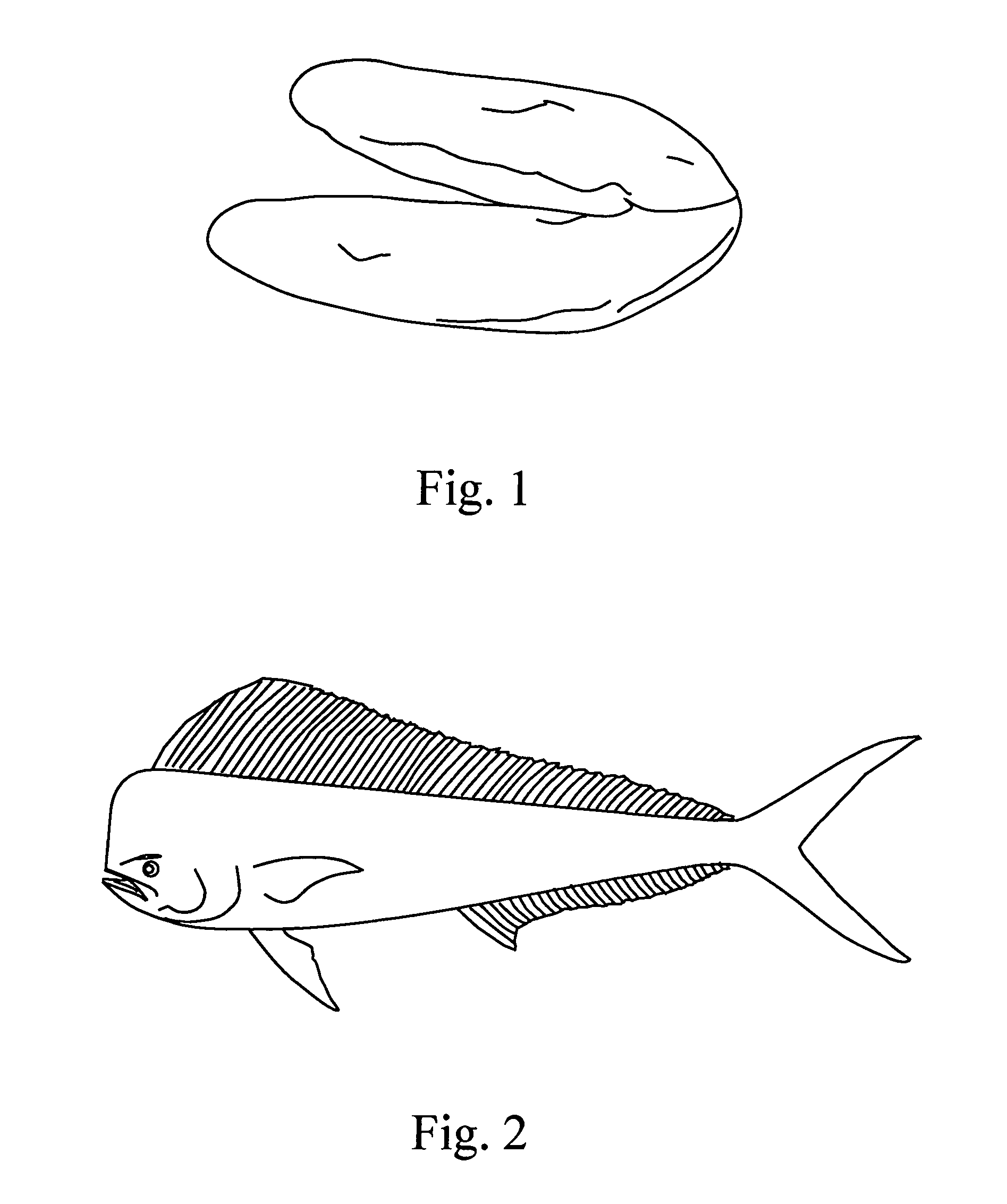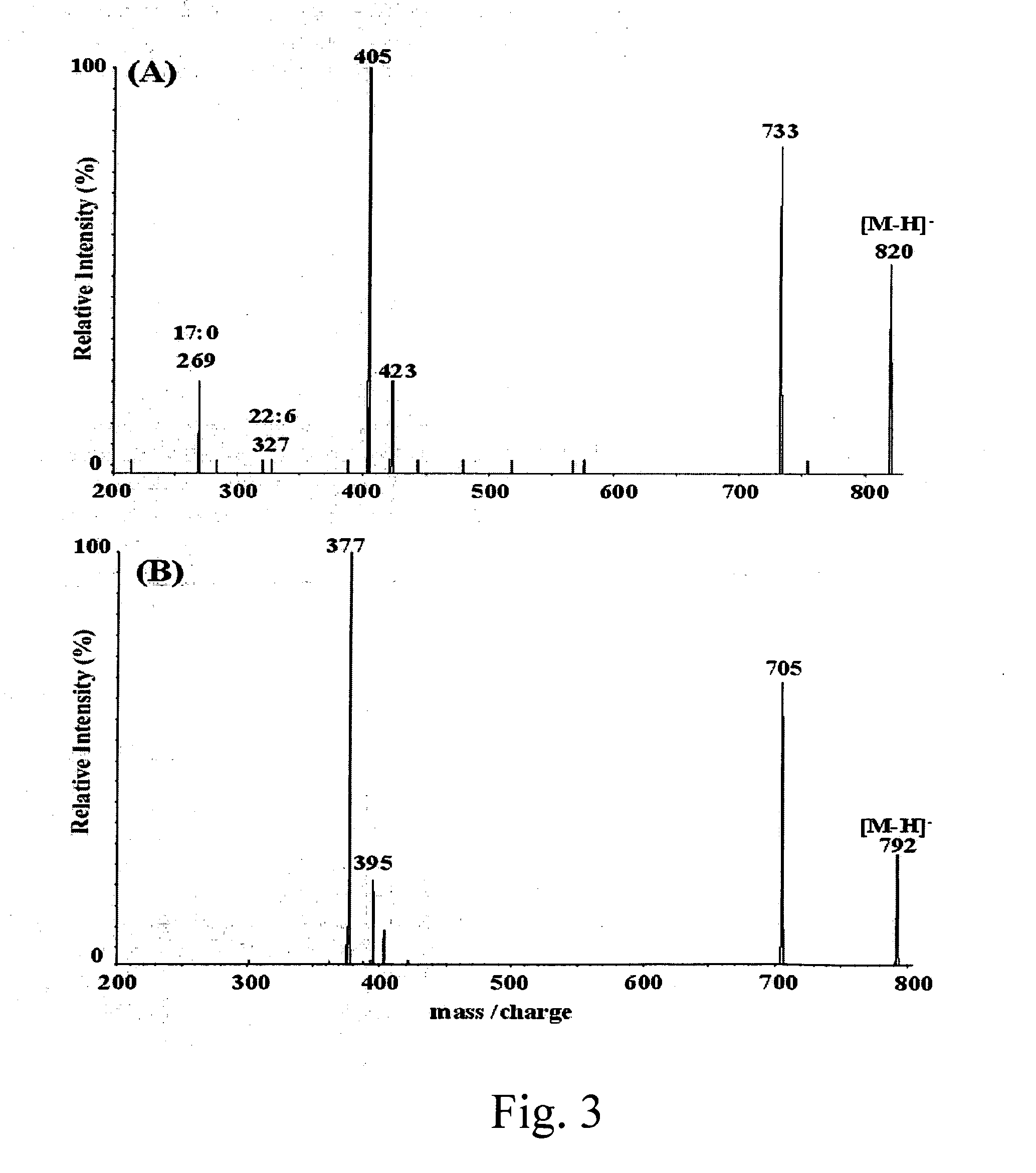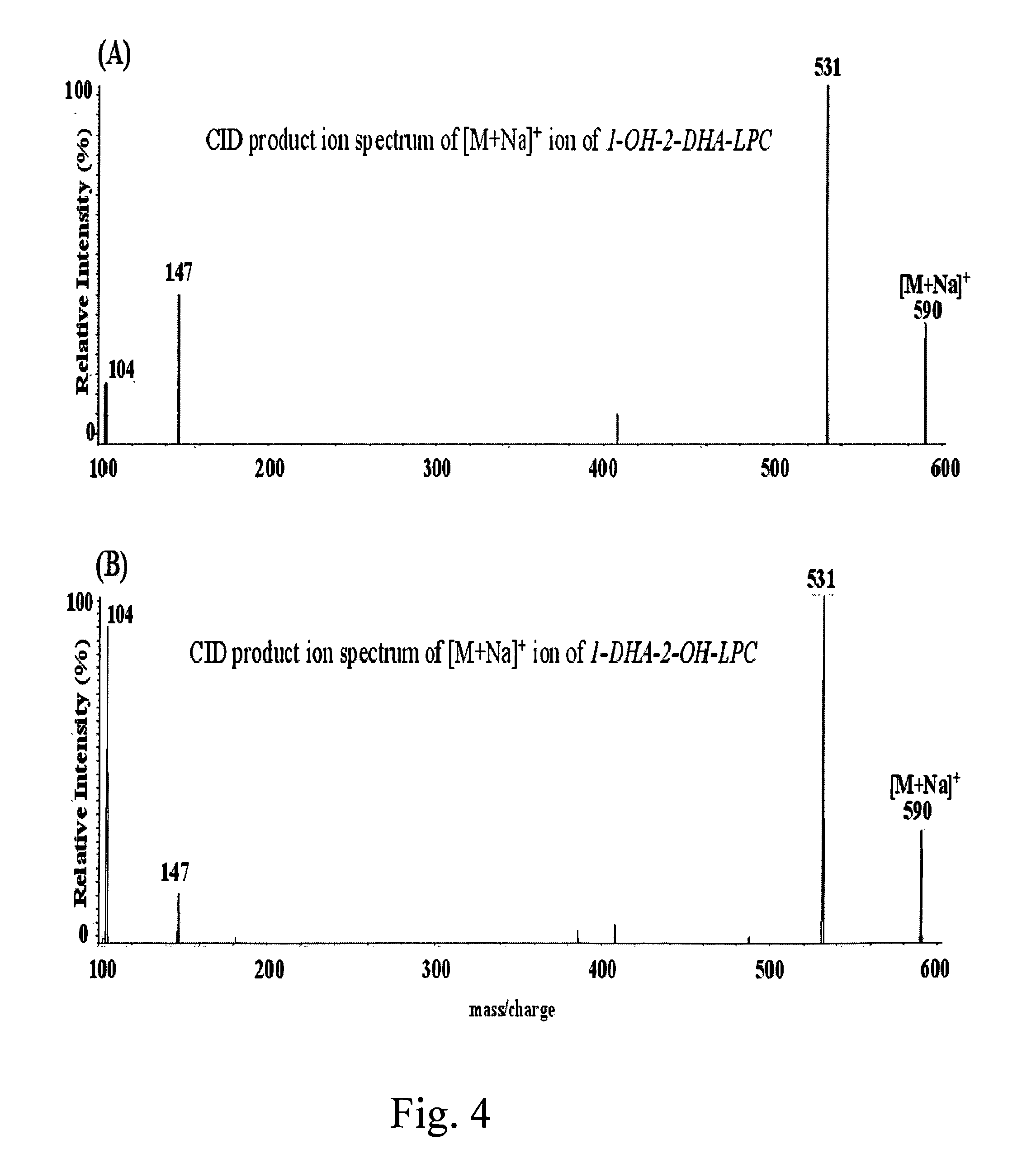Mixtures of and methods of use for polyunsaturated fatty acid-containing phospholipids and alkyl ether phospholipids species
a technology of polyunsaturated fatty acids and phospholipids, which is applied in the field of polyunsaturated fatty acid-containing phospholipids and alkyl ether phospholipids species, can solve the problems of small amount of dha found in the brain, difficult to obtain molecular species mixtures containing enriched dha-containing ether phospholipids and lysophospholipids species from aquatic animals, and difficult to synthesis these phospholipid species
- Summary
- Abstract
- Description
- Claims
- Application Information
AI Technical Summary
Benefits of technology
Problems solved by technology
Method used
Image
Examples
example 1
Preparation of Crude Lipids Extracted from the Liver of Saltwater Fishes
[0049]About two sharks were obtained in a fish market near the city of Medan in Indonesia, and the livers (approximately 1,170 grams (FIG. 1; see below) and 550 grams of the wet liver material, respectively) were transported in ice and then passed through a hand meat grinder. Tiny liver fragments were made with an electronic blender and were then mixed with about 20 volumes of cold acetone standing for four hours. After removing the acetone, the liver fragments, now the pellets were dried under nitrogen, and then the dried pellets were homogenized with about 10 volumes (w / v) of ethanol / ethyl acetate (1 / 1; v / v) stirring overnight. After evaporation of the ethanol / ethyl acetate, about 172 grams of crude lipids extracted from 1,170 grams of the wet liver material were obtained.
[0050]About 50 grams of the crude lipids were mixed with about 10 volumes (w / v) of acetone, and then the solution was stirred at about 30° C...
example 2
Purification of PC and Lyso PC from Crude Phospholipids
[0051]Mixtures of PC and Lyso PC species were purified from about 10 grams of crude phospholipids by silica gel chromatography using an axial pressure in an about 250 mL-column equilibrated with chloroform / methanol (95 / 5); gradient elution was performed with mixtures of chloroform / methanol 90 / 10 (v / v), 80 / 20 (v / v), 70 / 30 (v / v), and 60 / 40 (v / v). PC species mixture was eluted from the column with a mixture of chloroform / methanol / water 50 / 50 / 1 (v / v / v), monitored by thin layer chromatography (TLC); and Lyso PC species mixture was eluted from the column with a mixture of chloroform / methanol / water 50 / 50 / 5 (v / v / v), monitored by TLC. The structures and percentage of purified PC and Lyso PC species mixtures, which were obtained by intensities of their protonated molecules of mass spectrometry [Brugger et al., Proc. Natl. Acad. Sci. USA, 94, 2339 (1997); Liebisch et al., Clin. Chem. 48, 2217 (2002)], are shown below.
[M+H]+Molecular Specie...
example 3
Preparation of Mixtures of Transphosphatidylated-Fish Liver PS Species
[0052]About 4 mL of acetate buffer (0.2M; pH 5.5), containing about 40 mM of calcium chloride and two grams of L-serine, were prepared at about 45° C. and then placed into an 20-mL disposable vial containing about 400 mg of purified PC from shark liver or about 450 mg of crude phospholipids. The vial was generally fully filled with argon. The enzymatic reaction was started by adding about 10 Units of phospholipase D (Streptomyces sp, BIOMOL, Plymouth Meeting, Pa., U.S.A). The mixture was left to react for about 15 hours at about 45° C. on a shaker. Once the reaction was complete, the vial was unloaded with about 40 mL of a mixture of chloroform / methanol 2 / 1 (v / v) and about 4 mL of water. The two separated phases were formed, and PS was in the down-phase. PS remaining in the up-phase was re-extracted with chloroform. After drying the combined two organic phases, PS was purified by silica chromatography, as describe...
PUM
| Property | Measurement | Unit |
|---|---|---|
| pH | aaaaa | aaaaa |
| psychological stress | aaaaa | aaaaa |
| physical properties | aaaaa | aaaaa |
Abstract
Description
Claims
Application Information
 Login to View More
Login to View More - R&D
- Intellectual Property
- Life Sciences
- Materials
- Tech Scout
- Unparalleled Data Quality
- Higher Quality Content
- 60% Fewer Hallucinations
Browse by: Latest US Patents, China's latest patents, Technical Efficacy Thesaurus, Application Domain, Technology Topic, Popular Technical Reports.
© 2025 PatSnap. All rights reserved.Legal|Privacy policy|Modern Slavery Act Transparency Statement|Sitemap|About US| Contact US: help@patsnap.com



